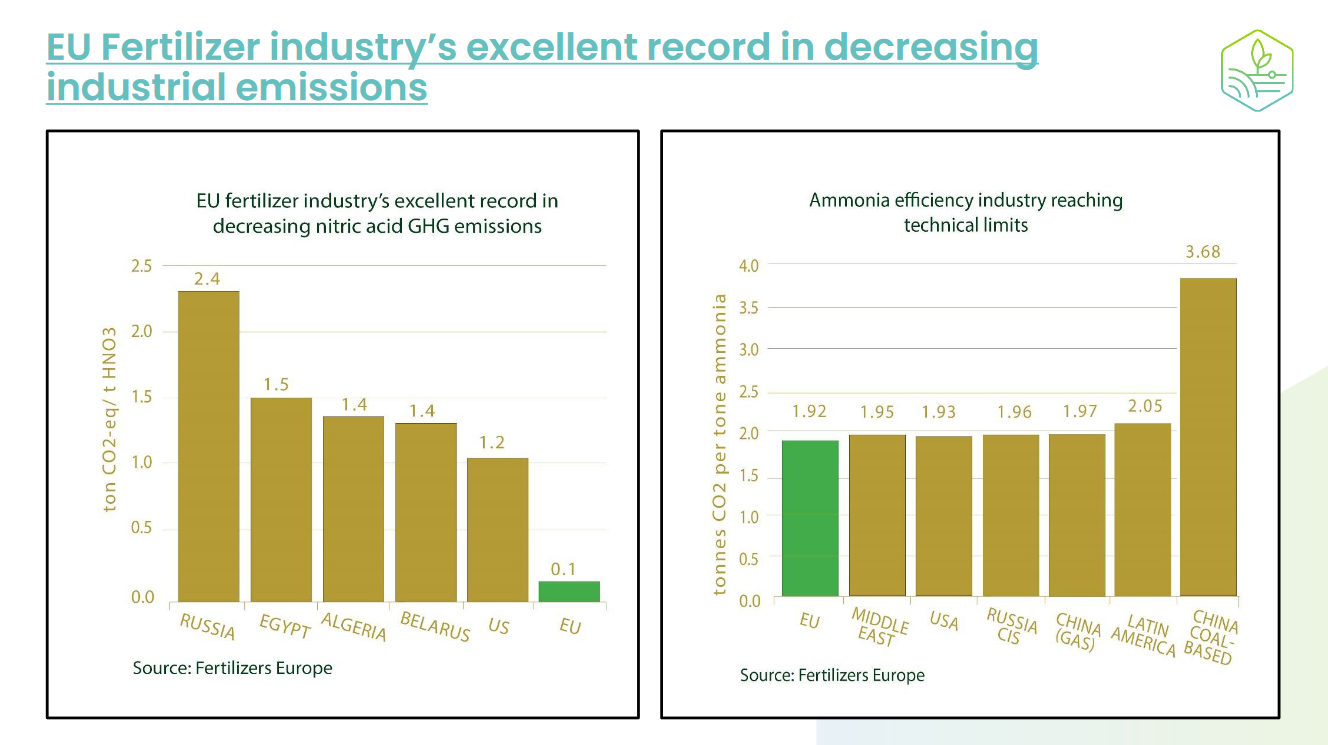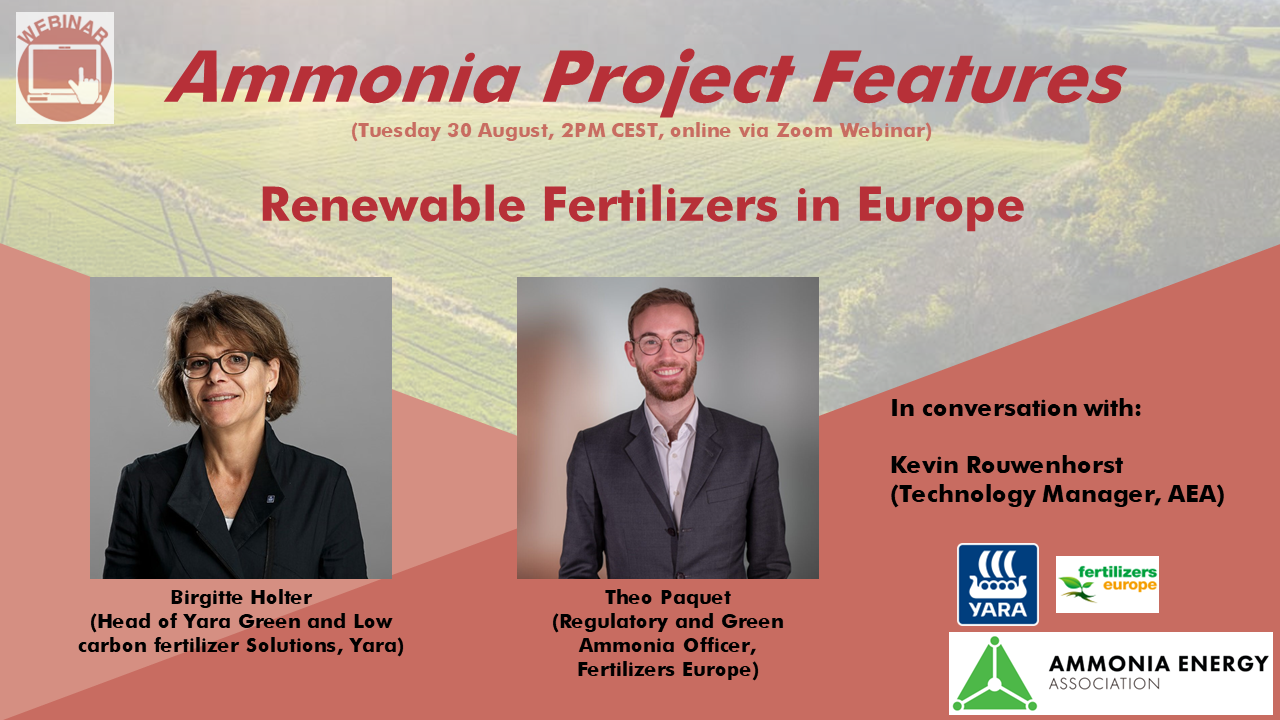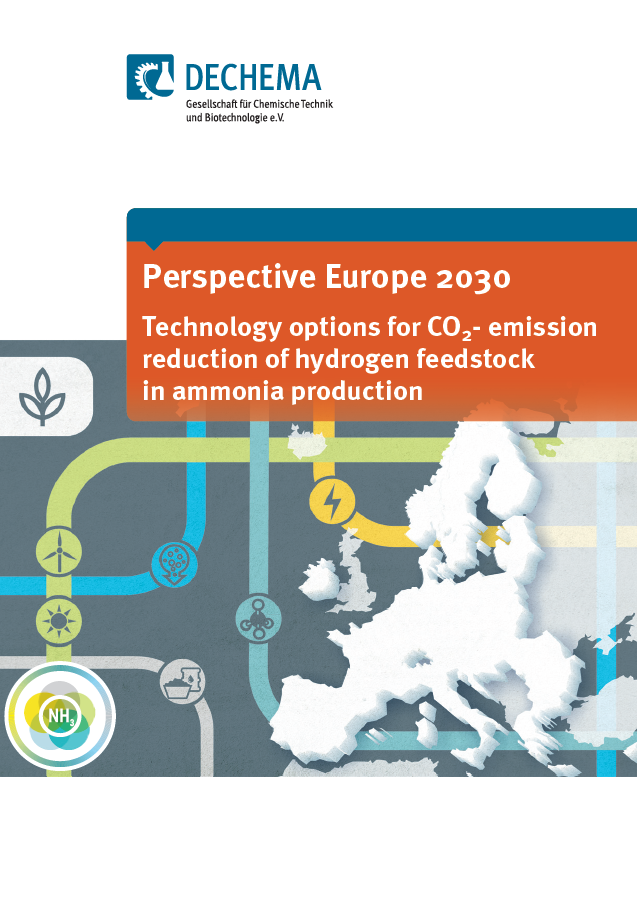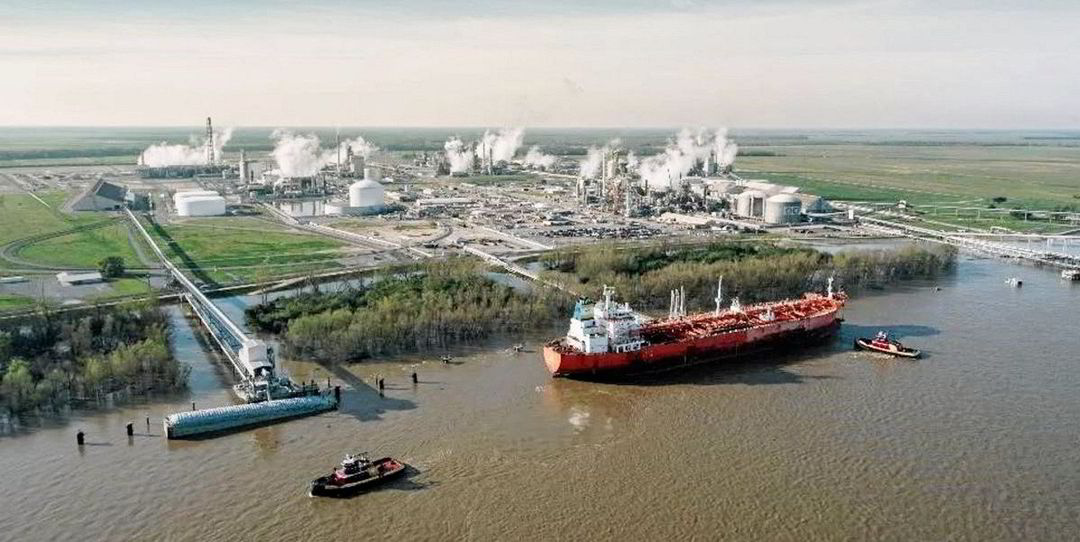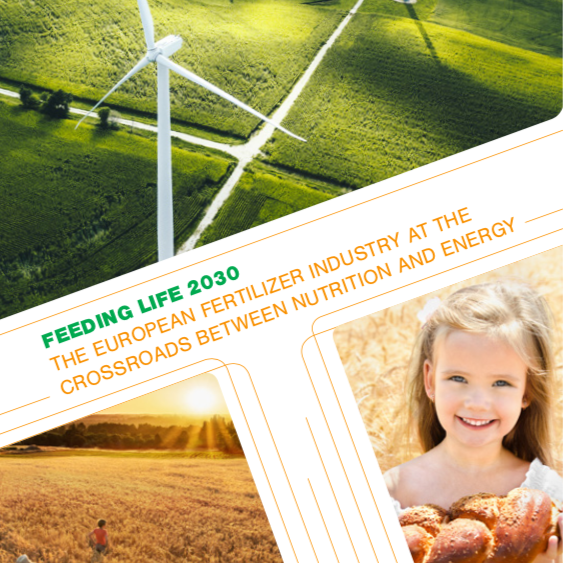In our most recent episode of Ammonia Project Features, we explored the potential for renewable fertilizers in Europe. Birgitte Holder (Yara) explained that renewable hydrogen is low-hanging fruit for decarbonizing food production, but further emissions reduction will come from working across the full value chain: including on the farm itself. Yara’s agreement with agricultural cooperative Lantmannen is part of this wider focus. From a regulatory perspective, Theo Paquet (Fertilizers Europe) showed us there are many regulatory levers to pull to achieve decarbonization goals in the fertilizer sector, and that national food & energy security concerns may accelerate regulatory change in the coming years.
Content Related to Fertilizers Europe
Webinar
Low and zero-carbon fertilizers in Europe
Meet Yara and Fertilizers Europe, two organisations currently exploring the potential for renewable fertilizer in Europe.
Article
DECHEMA and Fertilizers Europe: decarbonizing ammonia production up to 2030
Kevin Rouwenhorst May 12, 2022
DECHEMA and Fertilizers Europe recently released a new report detailing how & where the European fertilizer industry can decarbonize leading up to 2030. Technology options for CO2-emission reduction of hydrogen feedstock in ammonia production explores decarbonization pathways including energy efficiency improvements, carbon capture & sequestration, renewable hydrogen feedstock and grid-based electrolysis. It proposes a detailed roadmap towards 19% emissions reduction from the EU fertilizer industry by 2030, and – looking ahead to 2050 – forecasts the almost complete decarbonization of the industry, via zero-carbon electricity generation in the EU and the growth of renewable hydrogen production. With the right policy & regulatory levers in place, Fertilizers Europe believes there is no reason the transition cannot happen faster.
Article
The Ammonia Wrap: world's largest ammonia manufacturing complex begins decarbonising, and a welcome boost for EU fertiliser producers
Julian Atchison April 29, 2021
Welcome to the Ammonia Wrap: a summary of all the latest announcements, news items and publications about ammonia energy. This week: the world's largest ammonia manufacturing complex begins decarbonising, a call for green hydrogen projects in Chile, new maritime decarbonisation forecast from MAN ES, decarbonised shipping at the Biden climate summit and Fertilizers Europe welcomes the new Carbon Border Adjustment Mechanism.
Article
Feeding Life 2030: the vision of Fertilizers Europe
Trevor Brown May 10, 2019
Fertilizers Europe published an important report in late 2018 that examines key drivers for the fertilizer industry and describes the "likely developments expected between now and 2030." These developments include producing "perhaps 10%" of European ammonia from renewable electricity by using electrolyzers to generate renewable hydrogen feedstock. This would require scaling up green ammonia production capacity to more than a million tons per year, within ten years. The report, Feeding Life 2030, also describes the policy framework required "to sustain the Vision." In this vision, ammonia sits at "the crossroads of nutrition and energy" and is recognized as "the ‘missing link’ in the coming energy transformation."
